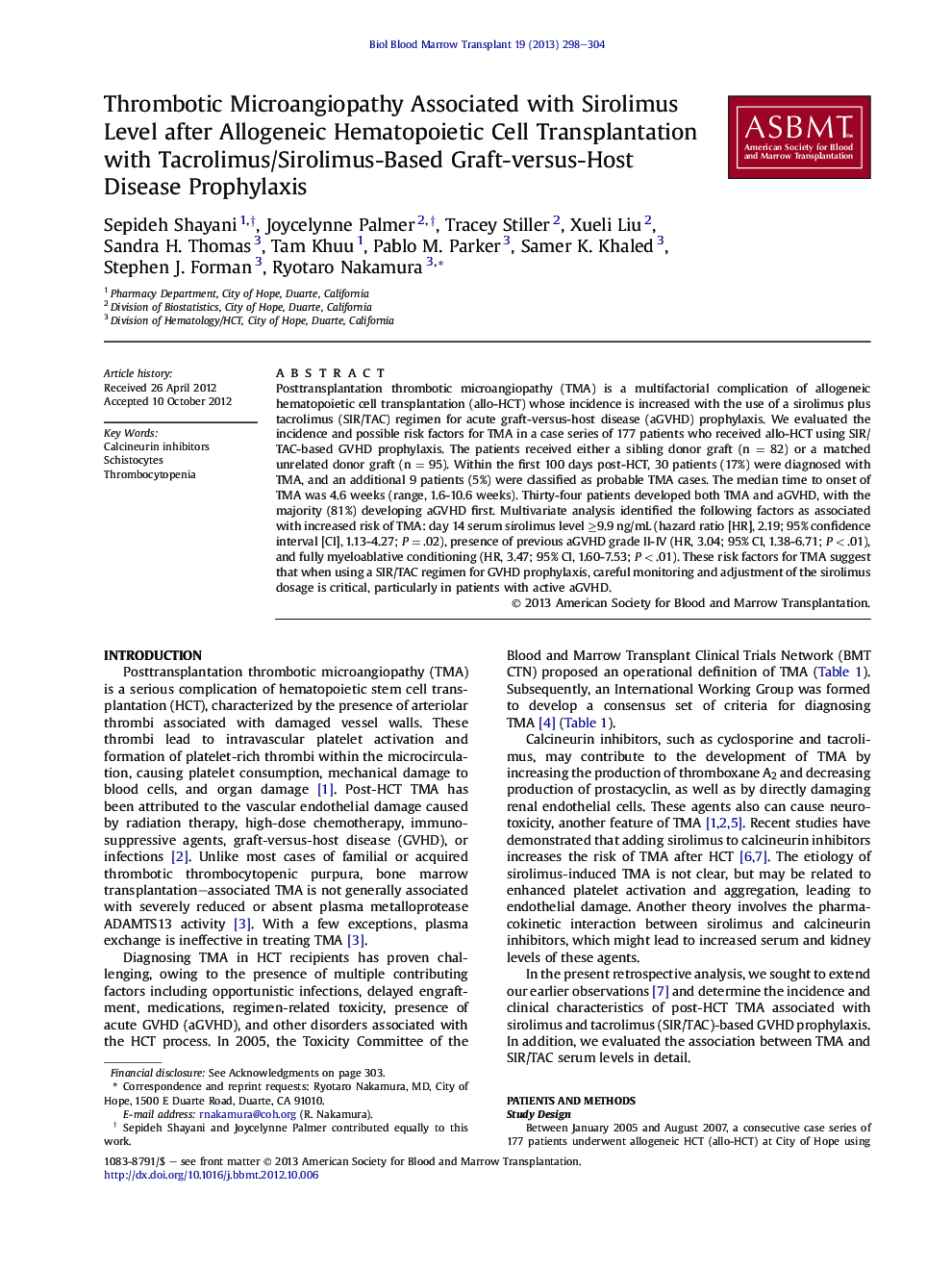| Article ID | Journal | Published Year | Pages | File Type |
|---|---|---|---|---|
| 2103138 | Biology of Blood and Marrow Transplantation | 2013 | 7 Pages |
Posttransplantation thrombotic microangiopathy (TMA) is a multifactorial complication of allogeneic hematopoietic cell transplantation (allo-HCT) whose incidence is increased with the use of a sirolimus plus tacrolimus (SIR/TAC) regimen for acute graft-versus-host disease (aGVHD) prophylaxis. We evaluated the incidence and possible risk factors for TMA in a case series of 177 patients who received allo-HCT using SIR/TAC-based GVHD prophylaxis. The patients received either a sibling donor graft (n = 82) or a matched unrelated donor graft (n = 95). Within the first 100 days post-HCT, 30 patients (17%) were diagnosed with TMA, and an additional 9 patients (5%) were classified as probable TMA cases. The median time to onset of TMA was 4.6 weeks (range, 1.6-10.6 weeks). Thirty-four patients developed both TMA and aGVHD, with the majority (81%) developing aGVHD first. Multivariate analysis identified the following factors as associated with increased risk of TMA: day 14 serum sirolimus level ≥9.9 ng/mL (hazard ratio [HR], 2.19; 95% confidence interval [CI], 1.13-4.27; P = .02), presence of previous aGVHD grade II-IV (HR, 3.04; 95% CI, 1.38-6.71; P < .01), and fully myeloablative conditioning (HR, 3.47; 95% CI, 1.60-7.53; P < .01). These risk factors for TMA suggest that when using a SIR/TAC regimen for GVHD prophylaxis, careful monitoring and adjustment of the sirolimus dosage is critical, particularly in patients with active aGVHD.
